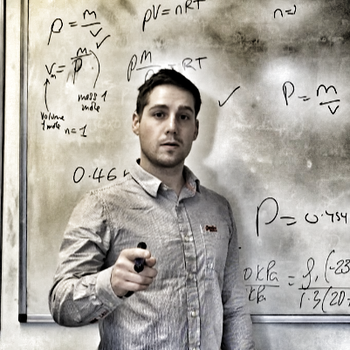Question #3f7bf
2 Answers
c) 22920 years
Explanation:
I am not 100% on this solution, so someone more knowledgeable than I should definitely feel free to jump in and correct if and where necessary.
Assumption : The question doesn't make sense if
Given the above assumption we have this:
Where subscript s denotes the sample's ratio and c the current ratio.
The question then is: how many half lives are required to reduce the ratio by that factor. Mathematically that can be expressed like this:
The question provides the half life of carbon-14, so we multiply the number of half lives by the time for each half life to determine the total length of time:
This is not exactly equal to either of the four options (not ideal!), but it is closest to option (c) 22,920 years.
(c) 22,920 years
Explanation:
If the ratio of
Then use this equation:
Remember that tthe decay constant, λ is given by:
Then the equation becomes:
Substitute in the values:
Option (c) is closest to this value, so that is the solution.

